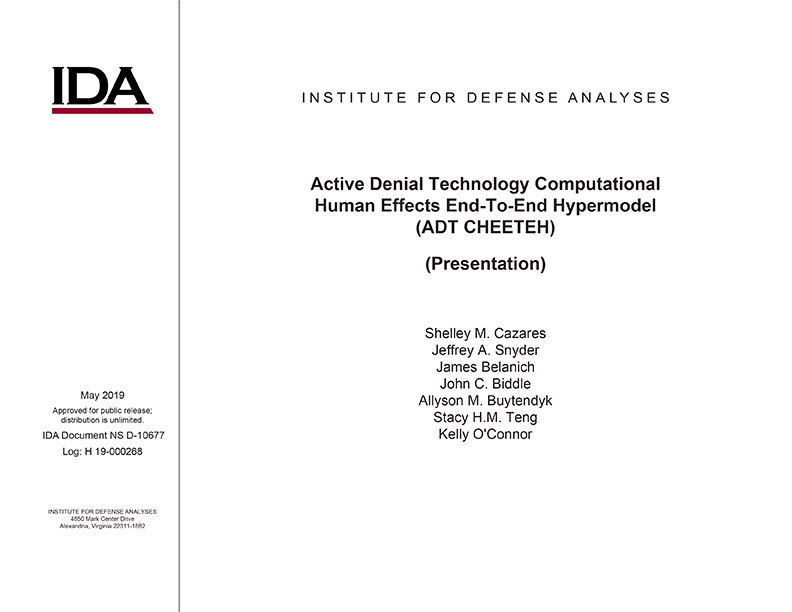Active Denial Technology Computational Human Effects End-To-End Hypermodel (ADT CHEETEH) (Presentation)
May, 2019
IDA document: D-10677
FFRDC: Systems and Analyses Center
Type: News Releases
Division: Science and Technology Division,
Science, Systems and Sustainment Division
Authors:
IDA document: D-10677
FFRDC: Systems and Analyses Center
Type: News Releases
Division: Science and Technology Division
Authors:
Authors
Shelley M. Cazares, Jeffrey A. Snyder, James Belanich, John C. Biddle, Allyson M. Buytendyk, Stacy H.M. Teng, Kelly O'Connor
See more authors

